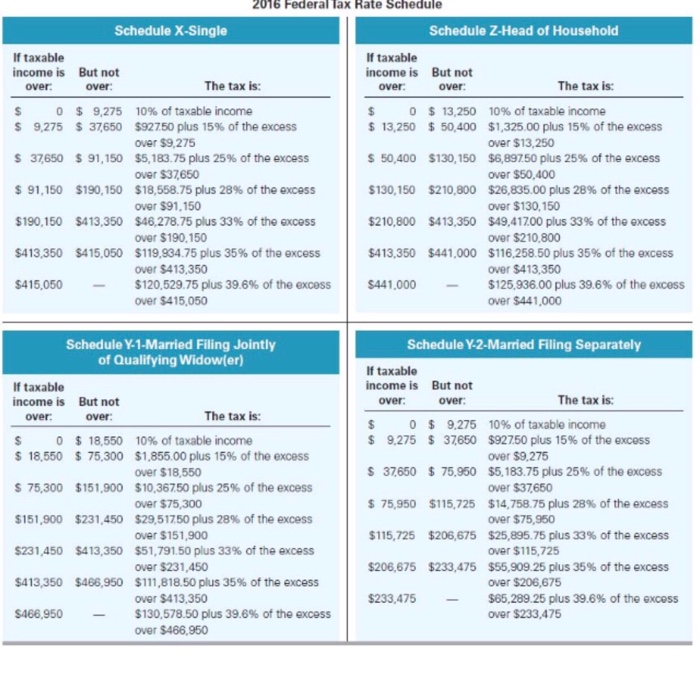Answered step by step
Verified Expert Solution
Question
1 Approved Answer
Whitney received $75,000 of taxable income in 2016. All of the income was salary from her employer. What is her income tax liability in each
Whitney received $75,000 of taxable income in 2016. All of the income was salary from her employer. What is her income tax liability in each of the following alternative situations? Use Tax Rate Schedule for reference. (Do not round intermediate calculations. Round your answer to 2 decimal places.)
a. She files under the single filing status.
b. She files a joint tax return with her spouse. Together their taxable income is $75,000.
c. She is married but files a separate tax return. Her taxable income is $75,000.
d. She files as a head of household.

Step by Step Solution
There are 3 Steps involved in it
Step: 1

Get Instant Access to Expert-Tailored Solutions
See step-by-step solutions with expert insights and AI powered tools for academic success
Step: 2

Step: 3

Ace Your Homework with AI
Get the answers you need in no time with our AI-driven, step-by-step assistance
Get Started


